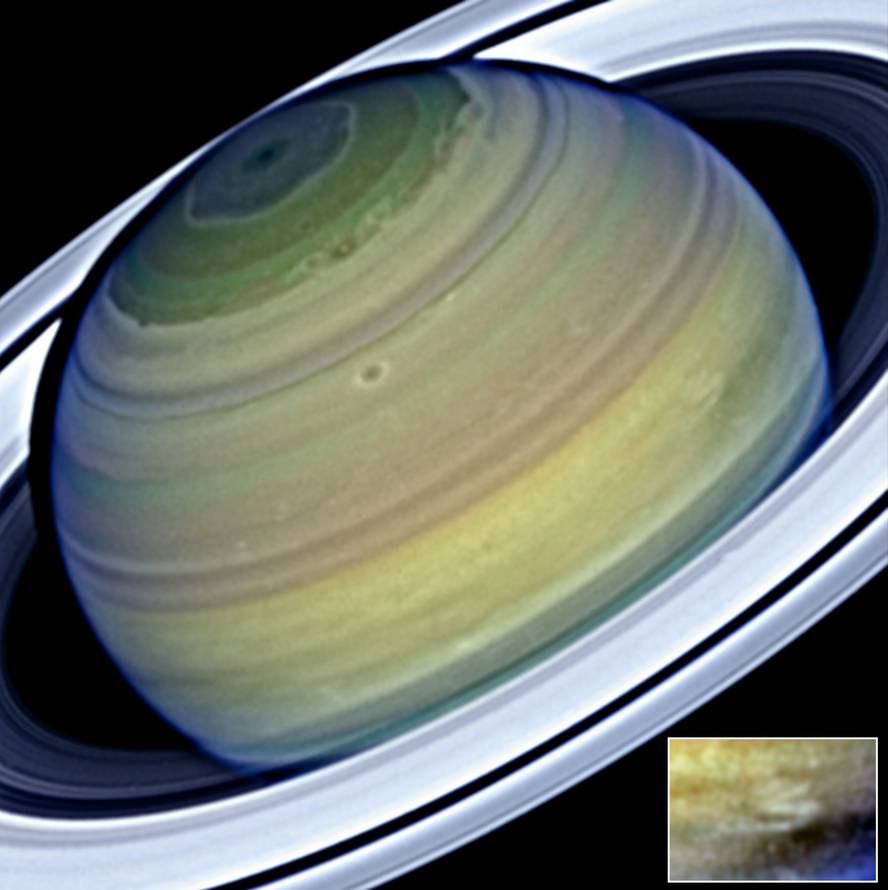The strong winds of Saturn return

Following a giant storm, researchers from the UPV Planetary Science group have studied the characteristics of the great jet stream of Saturn. For example, they have measured that winds ranging from east to west in the equator reach a speed of 1.650 km/h, three times higher than those with the most destructive hurricanes on Earth. The work has been published in the journal Nature Communications.
Jet currents are almost horizontal high-speed wind currents. The equator of Saturn covers about 70,000 km from north to south, five times the size of our planet. It is the widest and most violent current jet of the Solar System. There are no theories that explain the nature of this current, nor the forces that feed it. In 2003, the Planetary Sciences group warned about the strong weakening of the winds compared to what was observed by the Voyager probes during the visit to the planet.
“Last June, with a simple telescope of 28 cm in the Aula EspaZio Gela [School of Engineering of Bilbao] we saw a bright spot in the equator of Saturn, which was moving to 1,600 km/h - says Agustín Sánchez Lavega, first signatory of the work and director of the Group of Planetary Sciences of the UPV, which was not seen using the high calcam developed by the telescope.” In addition, observers from other countries used images obtained with small telescopes.
Finally, the researchers have been able to analyze the phenomenon in more detail, since they obtained the authorization to use the Hubble Space Telescope. “The observation time in Hubble is very difficult, it is very competitive, but the images obtained are of very good quality and have been decisive in the research,” explains Sánchez Lavega.
The bright spot was a gigantic storm of about 7000 km, and after analyzing the movement of the clouds and the surroundings, the researchers have obtained new information about the structure of the great jet current. They have seen that the deeper the atmosphere is, the stronger the winds. Speeds of 1,100 km/h have been measured in high atmosphere and 1,650 km/h in depths close to 150 km. In addition, the deep wind is stable, but in high atmosphere the speed and width of the equatorial current are very variable due to the insolation cycle. In the shade of the rings of Saturn, the winds are reinforced.
In addition, other meteorological phenomena affecting the wind have been detected. “All these phenomena occur on our planet on another scale. Thus, investigating in other worlds in very different conditions serves to better understand these phenomena and to model them,” explains Sánchez Lavega.





